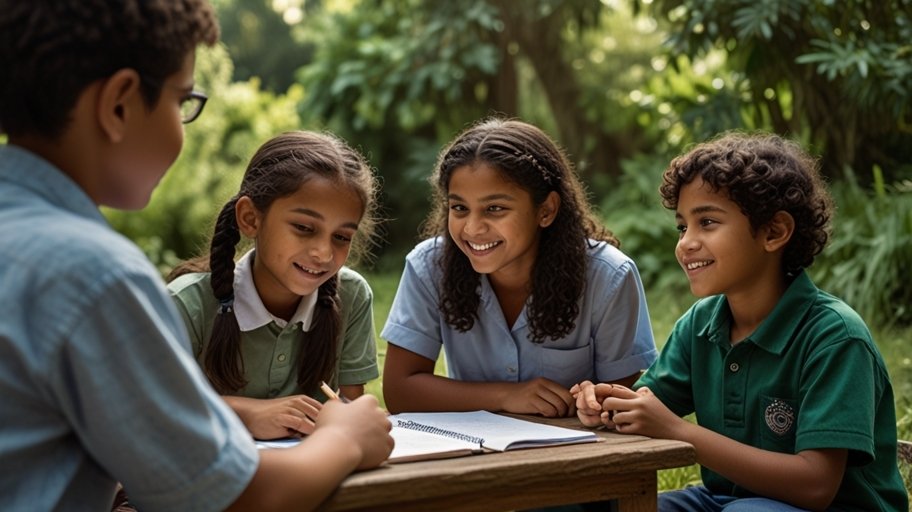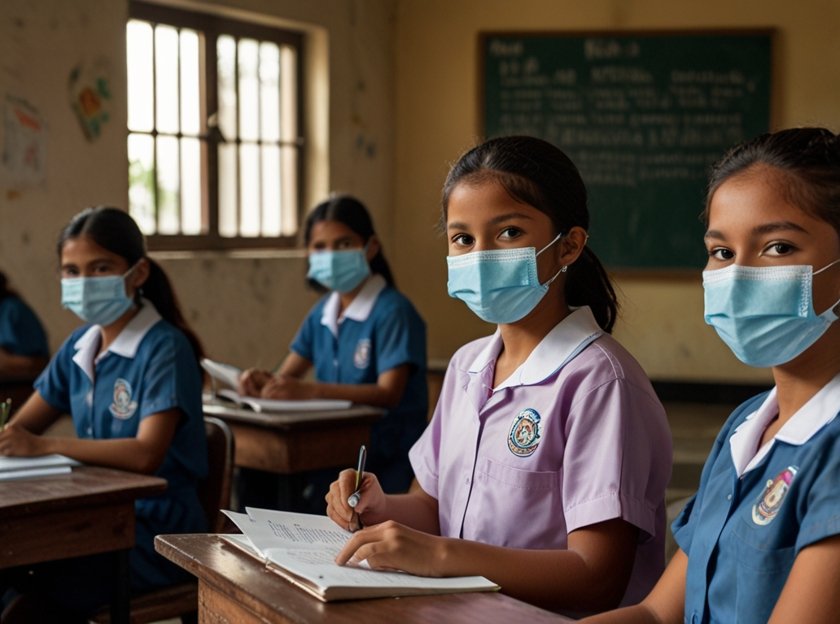Guatemala is a middle-class country in Central America known for its rich cultural diversity. It is a country that faces some of the profound challenges on its coasts, particularly within its education sector. The sector has too many issues on its head, such as low enrollment rates, poor infrastructure, and uneven distribution of education, especially within the urban and rural settings. The pandemic has made things worse as various aspects of education have been severely disturbed. It is now that the education sector has been obliged to innovate and adapt quickly in order not to allow children to lose more ground as the country works towards recovery due to the pandemic. In this article, I will explore the current state of Guatemala’s education system, what impact the pandemic brought, and the strategies being implemented for recovery.

State of Education Sector Pre-Pandemic in Guatemala
Recovery efforts also depend on the perception of the state of Guatemalan education before the pandemic. Several issues in the structure and delivery of education have plagued this country for many decades, including inattention to quality and attainment.
Guatemala’s Education System
Access to education with inequality : Guatemala is a case which greatly exhibits the general difference in the country’s composition concerning urban and rural regions, as well as regarding indigenous and non-indigenous people. Out of the population, over 40% is classified as an indigenous being by UNESCO; such a group has several disadvantages regarding access to education. In primary education, the indigenous girls are also less likely to complete their level of education; besides, the disparity becomes even higher among both groups with increasing levels of schooling.
High Dropout Rate : The country that has the highest dropout rate in Latin America is Guatemala. The World Bank states that the percentage of children completing lower secondary education before the start of the pandemic was just 50%. Some of the reasons cited for this include economic factors, cultural factors, and needing to work to support the family.
Underspending and Lousy Infrastructure : Because of this financial shortfall, the education sector has been periodically underspent by government coffers. While UNESCO recommends 6% of the Gross National Product be spent on education, Guatemala’s government spends less than 3% of its Gross Domestic Product on education. In practice, this has translated to lousy infrastructure, most particularly in rural areas where it is often overwhelmed by oversized classes, lack of adequately trained teachers, and anemic availability of textbooks and other curricular materials.
Quality of Education: Lack of quality education is another perennial issue. Most teachers are not adequately prepared, especially in rural schools. Overcrowding in classes and fewer resources have also resulted in low assessments of academic performance. PISA is one of the international assessments that has repeatedly ranked Guatemala at the bottom of the region in student achievement. These pre-existing challenges have been worsened by the COVID-19 pandemic, largely disrupting learning for millions of Guatemalan students.
The COVID-19 Pandemic: Developing Crisis and Impacts on Education
This closure confined more than four million students to house arrest, as the novel coronavirus pandemic swept through Guatemala at the start of 2020. The blanket closure of schools in the country led to a sad commentary: the deep digital divide created by the fact that many of these students-many particularly rural and indigenous-most lacked access to the technology to carry on with their studies once classes began to shift to distant learning.
The Digital Divide: Almost all the school-going youths in Guatemala do not own computers and access to internet. According to reports from UNICEF, internet penetration is extremely low, reaching to only 20% households only, even less in some rural settings. This digital divide greatly made it very hard for huge parts of students to engage with e-learning programs during the pandemic, further deepening the already aggravating gap between education in urban and rural settings.
The lack of access to remote learning led to significant learning loss. According to UNESCO, students in Guatemala may lose one to three years of schooling due to the pandemic. Younger students are most affected, at critical stages of development in literacy and numeracy, and other underprivileged groups, including those children from indigenous communities and low-income families.
Besides the academic setback, there are psychosocial impacts from the pandemic that the pupils have suffered. The uncertainty of the situation, economic hardship, and most importantly, isolation from friends of most children has worsened stress and anxiety levels. Many students were also affected by the closure of schools as they lost access to essential services like school meals and health services.

Post-Pandemic Recovery Strategies
In response to the challenges thrown by the pandemic, the government of Guatemala, with international organizations and NGOs, has introduced an array of strategies that are set to advance learning in the education sector. First, hybrid learning models are open both for children and young adults, as the care of younger children is exercised by older siblings while their parents are in quarantine. “Learning loss” is being mitigated through a myriad of resources provided online, with links distributed to each student’s digital address. In the future, a more resilient and equitable education system will be built to better serve generations to come.
- Hybrid Learning Models
The government and education authority, therefore, have focused on hybrid models of learning so that the students can access digital technology. These hybrid models would add in-class instruction along with learning from remote areas. This will keep much flexibility and adaptability open for dealing with public health conditions going forward.
Guatemala Education System Post-Pandemic Recovery Strategies
Radio and Television Programs : Where access to the internet has largely been even in scarce supply, then the government made use of radio and television as a conduit to carry educational content. Education through radio has particularly been fashioned to reach out to students in the remote areas. Their programs may take the form and cut across literacy and numeracy, health education, and civic engagement.
Printed Study Materials : Fully aware of the fact that this will largely overcome the digital divide, printed study materials have been issued to students in rural and indigenous groups. The printed materials used correspond to the national curriculum but are arranged in a way designed to be worked on independently by the students or aided through their family members.
- Bridging the Digital Divide
Expanding access to technology and the internet are some of the most important strategies the Guatemalan government has undertaken to reduce the long-term digital divide. Initiatives focus on providing students and teachers with all the tools they need to engage in digital learning at schools in rural areas as well.
Internet Access Expansion : The government will expand internet access in collaboration with companies in the private sector and international organizations. The internet by schools will serve as a good conduit where students will obtain online learning tools.
It has brought several initiatives that provided the devices needed for accessing distance and online learning by the students. For example, the Ministry of Education worked with NGOs and private sector partners in rolling out distribution of tablets and laptops to underprivileged populations. At this point, the campaign remains at an early stage, and it is however a very crucial juncture of closing the digital divide.
Staff Training in Digital Literacy : Education can do well with staff being educated on digital tools and online methodologies to teach. For this purpose, the government has provided professional development programs to educate staff on digital literacy and online pedagogy. It is necessary for teachers in enabling them to be involved with students through hybrid or remote learning settings.
- Remedial Education and Learning Recovery
One of the highest priority areas for the post-pandemic period is learning loss. Through several initiatives, the government of Guatemala was trying to help students re-engage with the education system and try to catch up on lost time.
Accelerated Learning Programs : Accelerated learning programs have been designed in order to enable those students who have fallen behind due to the lockdowns to catch up. These accelerated programs are based on core subjects like literacy, numeracy, and science and are designed to help students make lost learning in a much shorter period than in school hours.
Tutoring and mentoring: The government in association with NGOs has developed tutoring and mentoring programs in tutoring and mentoring where more support would be achieved with students who are highly vulnerable, including those of indigenous origin and low-income level families.

Psychosocial Support : schools have also considered providing psychosocial support to children since this was an experience with emotional and psychological impacts of the pandemic. Counseling services and programs have been created to help children overcome stress and trauma that would be brought about by a school-building experience during the period of this pandemic. Friends offer support groups, and mentorship programs to help children build resilience so that they can join again in the classroom environment.
- Equity and Inclusion
The pandemic only underlined deep inequalities within Guatemala’s school system, particularly for indigenous and rural students. Whatever policies and programs for recovery from the pandemic will look to translate greater equity and inclusion into education policy.
Bilingual and Intercultural Education : It can be an important issue since most indigenous students often receive instruction in Spanish as their first language but may not speak any of the twenty-two indigenous languages that remain as the vernacular in much of the country. This led the government to expand bilingual and intercultural education programs that provide instruction in Spanish as well as in indigenous languages to redress the issue. Such educational approaches aim to guarantee the rights of indigenous students to education in their native language, while also learning Spanish, for the sake of broader participation in society.
Targeted Support for the Most Vulnerable Students: Indigenous children, girls, and children with disabilities among others will have special attention, with the aim of maximizing scholarship programs, conditional cash transfer, and feeding programs for children in schools.
- Infrastructure Strengthening
The government is also strengthening the education system by providing better physical and organizational infrastructures for schools, such as:
School Infrastructure Upgrade : The pandemic laid bare the pitiful state of several school buildings-mostly in rural areas. A significant part of the recovery policy is focused on the government’s investment in school facilities, new classrooms, and repair and renovation work that will ensure schools have good water and sanitation facilities.
Health and Safety Measures : When schools reopen, health and safety will remain a top priority. The Ministry of Education has faced serious health challenges by working on sanitary cleaning, obligatory wearing of masks, and measures of social distancing in order to forestall the spread of COVID-19 in schools.
Conclusion: A Long Road Ahead
The post-pandemic recovery of Guatemala’s education system still has tremendous challenges ahead. However, these strategies being implemented-range from hybrid models of learning to bridging the digital divide, with a focus on equity and inclusion-provide a roadmap toward building a more resilient, equitable education system. It is now quite clear that the pandemic has highlighted an important need for additional investment in education, targeting rural and indigenous areas. Only concerted efforts by the government, international organizations, and civil society will push forward the change, so the education received by all children regardless of ethnicity or location shall be first-rate. The road to recovery will be long, but with concerted effort and innovation, Guatemala can create a better future for all its students.
